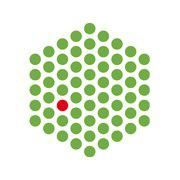 Impact of AlphaFold on teaching and training in life sciences
Impact of AlphaFold on teaching and training in life sciences
Date: 21 June 2022 @ 09:00 - 17:00
This is the second webinar of the series about the impact of AlphaFold on training and research in life sciences. This webinar will focus on how AlphaFold is changing or will change the teaching/training landscape in life sciences. This will help us identify the gaps and opportunities for developing training materials for students and researchers.
To discuss the impact of AlphaFold on teaching and training in life sciences we had the following panel of speakers:
Alexandre Bonvin - In my short talk, I reflected on how we have been incorporating AlphaFold in the bachelor and master courses I am giving at Utrecht University for chemistry and molecular and cellular life sciences students.
I have been teaching molecular modelling for many years, describing how to represent molecules and their energetics and model their structure and dynamics in silico. The advanced master course also has a computer practical in which students do homology modelling, run molecular dynamics of a peptide and use the output for modelling a protein-peptide complex by docking. Part of this practical was published as an educational article. This year we introduced at the end an AlphaFold “bonus” module in which students model directly the protein-peptide complex from sequence, something which works extremely well in this particular case. We are also using AlphaFold this year in the context of a second year bachelor project in which students investigate how well AlphaFold performs for the modelling of antibodies.
In both cases, students have little knowledge of the machinery under the hood, but only some general understanding of the role of AI in the process. Still they manage to use this fantastic resource very efficiently. Key factors here are in my opinion: 1) the availability of Jupyter notebooks that make using the software extremely easy, and 2) the free computational resources of Google Colab. Without those it would simply be impossible to expose students to such methods as installing the software and more importantly the 2TB of data for the model is simply not doable on student’s laptop or computer rooms managed by our university IT.
Panagiotis L. Kastritis - AlphaFold is revolutionising structural, molecular and even cellular biology due to its unmatched accuracy for various protein targets. In addition, the recent AlphaFold Structure Database and ColabFold are fast-tracking structural biology research via models to be utilised either as hypothesis generators or explanatory of previously perplexing experimental data. However, incorporating AlphaFold in teaching requires special attention because (a) fundamental understanding of machine learning is not trivial; and (b) physicochemical principles of protein folding, in the light of AlphaFold success, must be harmonised with interpretable machine learning, which is presently unavailable. I conclude that practical aspects of AlphaFold are currently preferable for teaching both students and young researchers in combination with, e.g., homology modelling, docking, and other structure building tools. In this way, students and young researchers critically assess their derived models and motivate themselves to deduce structure-function correlations while furthering working hypotheses on a given system.
Ezgi Karaca - I have been teaching in molecular biology and medicine departments. My students usually come with a little knowledge in structural biology. Thanks to the availability of the EMBL-EBI AlphaFold (AF) Database, I can show them the “images” of proteins to explain how a protein structure is related to its function. Otherwise, we have been using AF over the ColabFold service for modelling disease-associated protein mutations/isoforms. The fact that AF provides a residue-based confidence score has been very helpful to us in assessing whether our models are biologically relevant. For large systems, though, a local installation of AF is required. Beyond protein structure prediction, the performance of AF on protein complexes are yet to be critically discussed. For this, we should wait for the outcome of the CASP15 experiment, where I act as the assembly assessor.
Dina Schneidman - I am teaching an advanced course on Structural Bioinformatics intended for Computational Biology and Computer Science students. The course consists of lectures, 5 exercises, and a 2-day hackathon. Several years ago, the never-changing course part on folding began to change. We had to update the lectures and the exercises. We have encountered several challenges. First, we realised we have to teach deep learning to students with insufficient background. Second, we had to make sure the homework assignments have reasonable training time and the students have access to GPUs. Finally, we had to think about hackathon projects that can be done within two days. In this webinar I described how we addressed these challenges in the webinar.
Keywords: AlphaFold Database
Venue: ,
Organizer: European Bioinformatics Institute (EBI)
Target audience: Plant research, Plant research
Capacity: 1000
Event types:
- Workshops and courses
Activity log

 EMBL-EBI
EMBL-EBI
